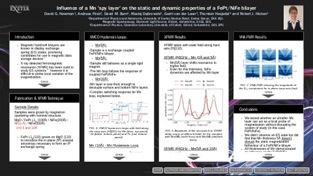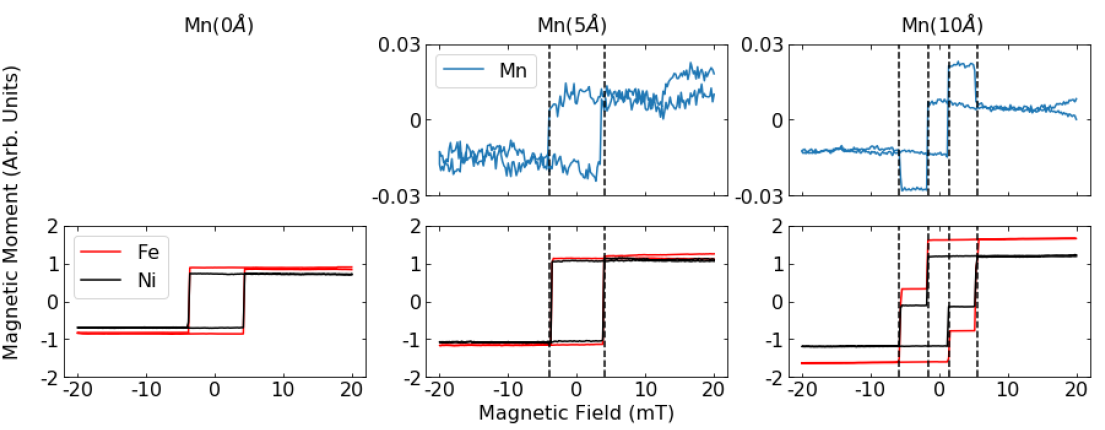
Influence of a Mn ‘spy layer’ on the static and dynamic properties of a FePt/NiFe bilayer
D.G. Newman, A. Frisk, D.M. Burn, M. Dąbrowski, G. van der Laan, T. Hesjedal, and R.J. Hicken
Magnetism and Magnetic Materials Online April 2021
Magnetic hard/soft bilayers are known to exhibit exchange spring states1, which are promising candidates for use in next generation magnetic data storage devices2. The dependence of the magnetic behaviour of Mn ions on their local magnetic environment has been well documented3. Therefore, a thin Mn layer inserted into the soft layer of a hard-soft bilayer can act as a probe of the soft layer magnetisation at a certain depth without disrupting the magnetic state4. Consequently, we have studied the influence of the Mn thickness on the static and dynamic magnetisation properties of L10 FePt/NiFe/Mn/NiFe thin films to find an ideal thickness for the Mn ‘spy layer’.
A series of samples with nominal structure MgO(110)/ L10 FePt(110) (100Å)/ NiFe(200Å)/ Mn(𝑥𝑥 Å)/ NiFe(200Å) were fabricated by sputtering with 𝑥𝑥 = 0, 5 and 10Å. X-ray magnetic circular dichroism (XMCD) was used to obtain element-specific hysteresis loops in order to explore the switching of the individual constituent layers (see Fig. 1). For 𝑥𝑥 = 0 or 5Å, the entire multilayer switches as a single rigid magnet. When 𝑥𝑥 = 10Å, the Mn layer appears to decouple the upper and lower NiFe layers. We explain the observed switching by attributing the Mn signal to two distinct Mn rich regions, each of which is strongly coupled to one of the NiFe layers. From VNA-FMR and XFMR measurements, we deduce that the upper NiFe layer resonance drives precession in one of the Mn rich regions as intended.

Figure 1: XMCD hysteresis loops for Mn (blue), Ni (black) and Fe (red) obtained from samples with Mn layers of different thickness as indicated. The loops were acquired with the magnetic field in the plane of the sample.
[1] M. Dąbrowski et al., Appl. Mater. Interfaces 46, 52116 (2020)
[2] T. Seki et al., Nat. Commun., 4 1726 (2013).
[3] C. Demangeat and J.C. Parlebas, Rep. Prog. Phys., 65 1679 (2002).
[4] J. Li et al., Phys. Rev. Lett., 117 076602 (2016).